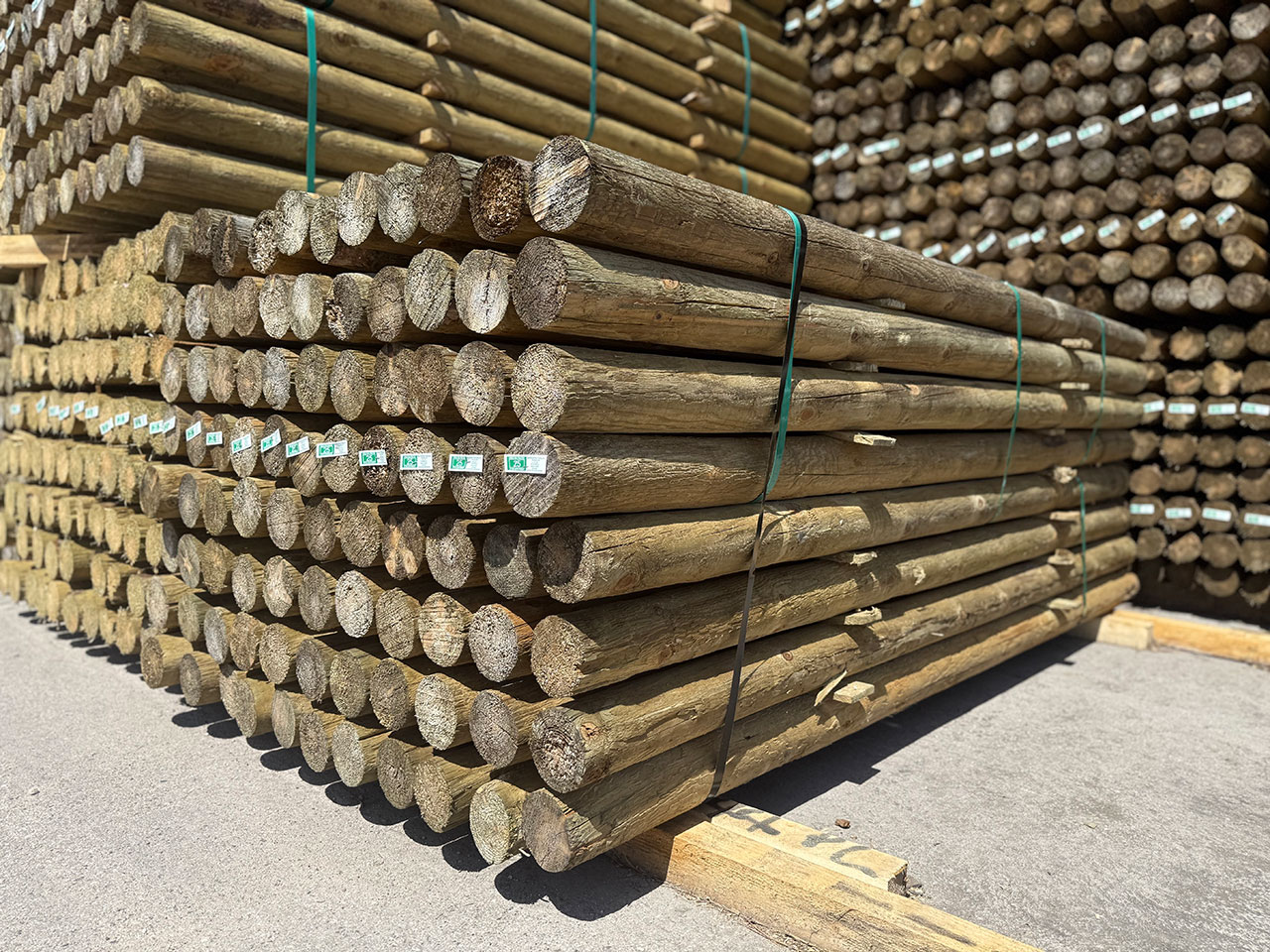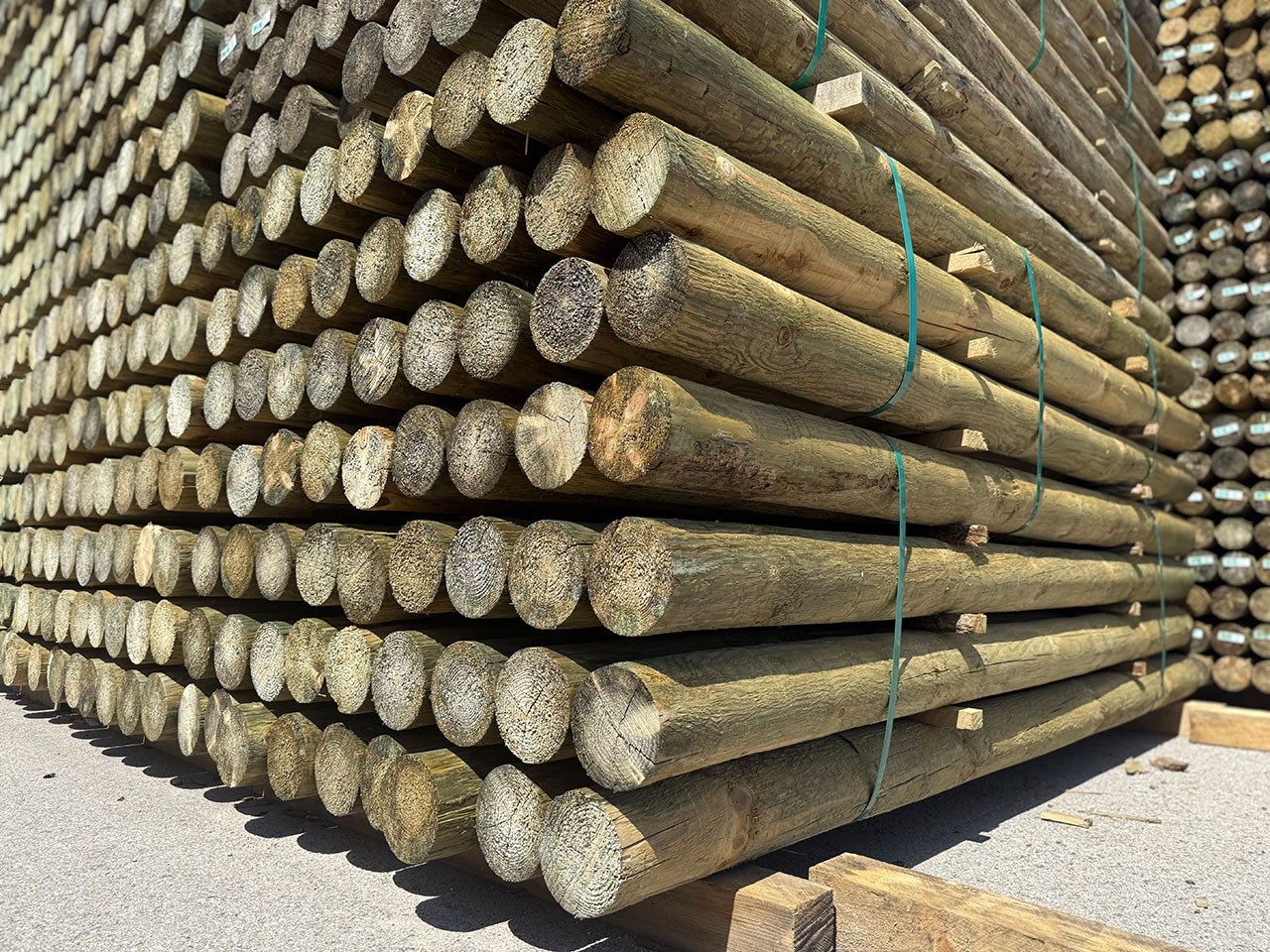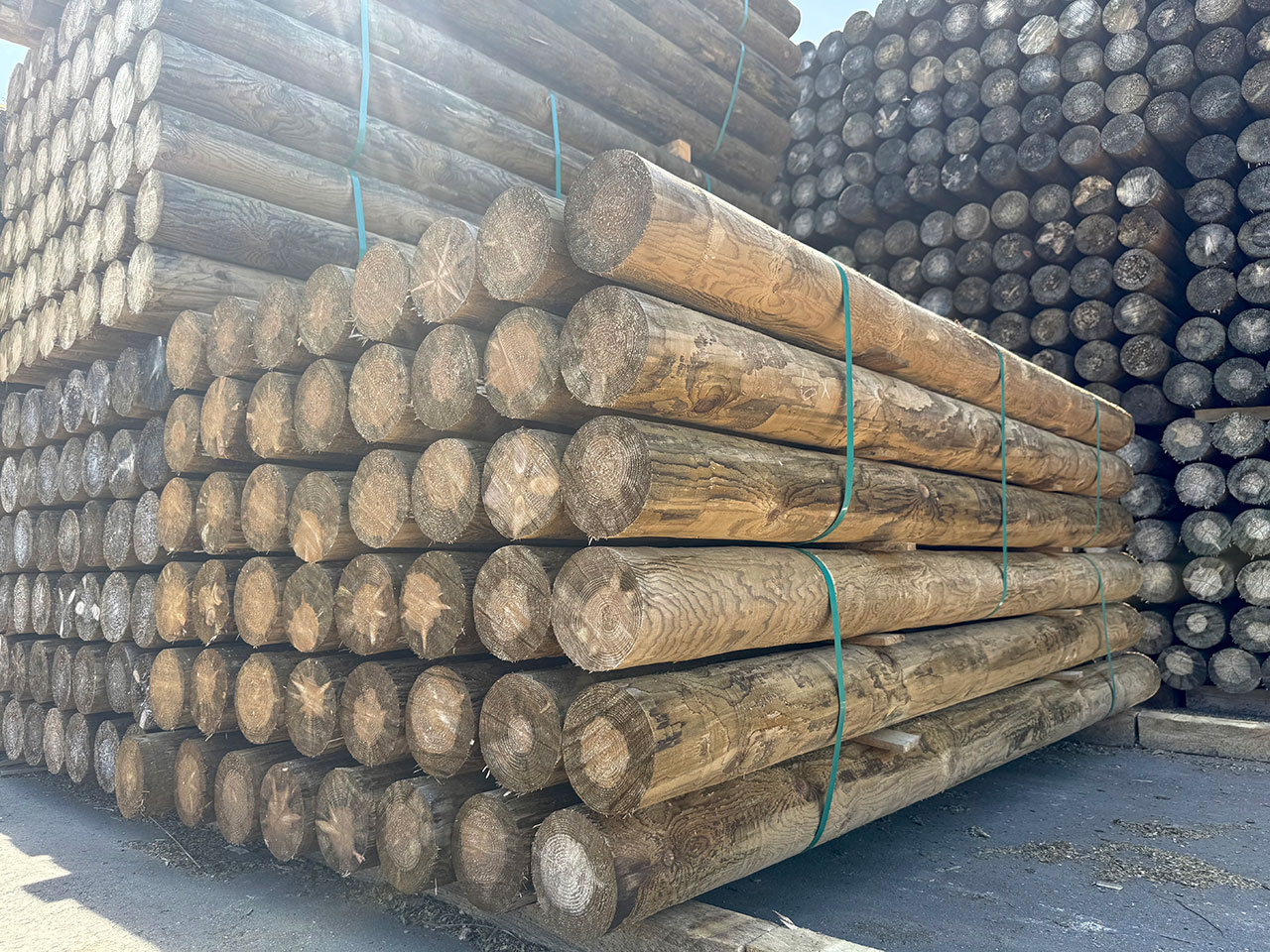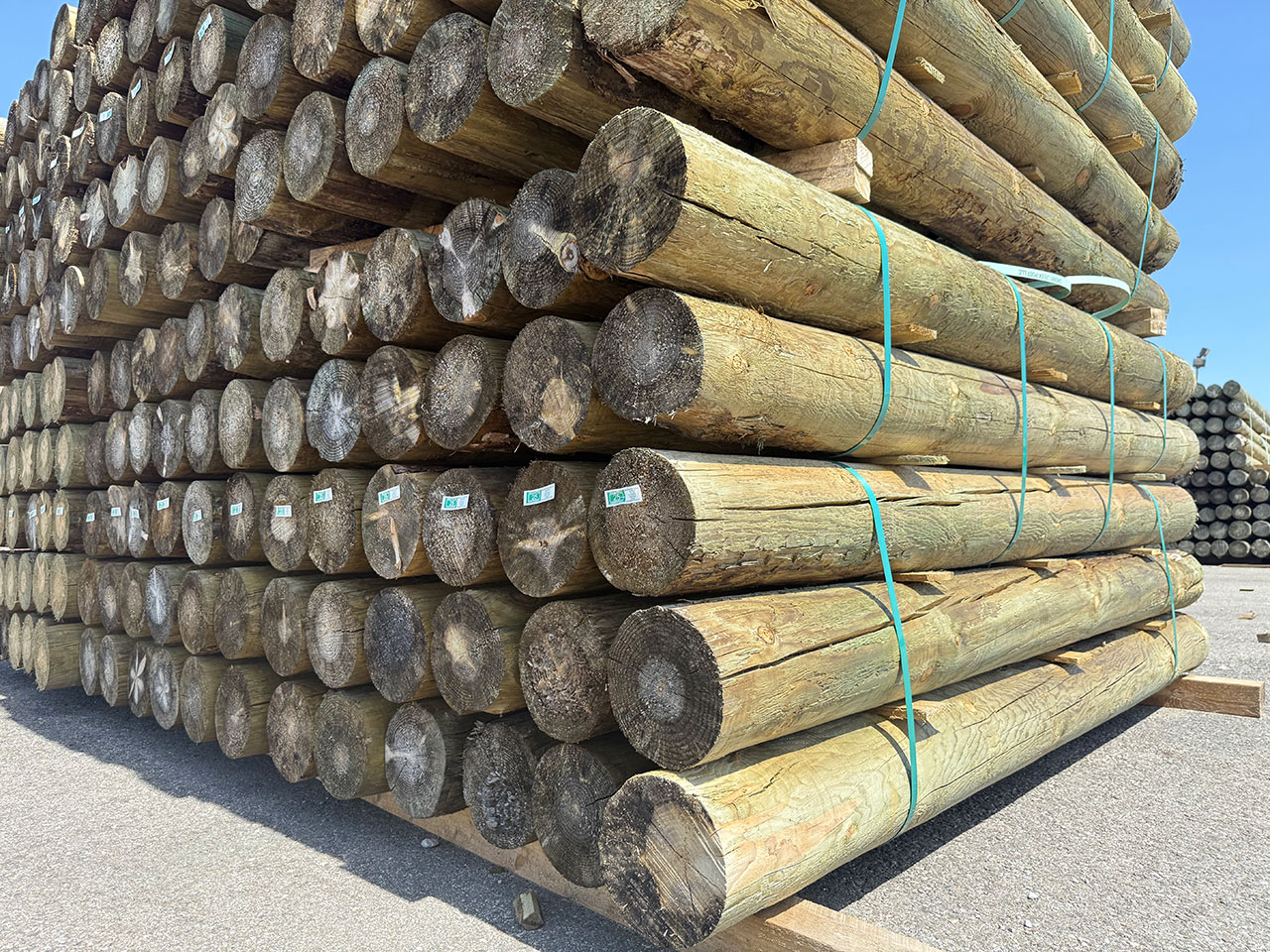When it comes to farm fencing, choosing the right 8-foot round treated post is key to building a stable, long-lasting farm fence. While several post lengths can be used for horse, livestock, or agricultural fencing, the 8 foot pressure treated fence post is one of the most popular. In this guide, we’ll break down some of the different diameters in this post length, their uses, and how to select the best one for your needs.
Why Use This Post Length?
This post size is used for a wide range of agricultural and farm fencing applications because they offer:
Reliable and Strong – Ideal for livestock, horse enclosures, and rural perimeter fencing, 8 foot posts provides secure containment where extra height isn’t needed.
Versatility – Compatible with various types of fencing materials including woven wire, welded wire, barbed wire, board fence, and electric fencing.But what size diameter is the best choice for you? Choosing the right diameter for these pressure treated fence posts depends on several key factors—including your budget, personal preference, and what you’re enclosing. Heavier-duty applications like cattle or horses, may require thicker diameters for added strength, while smaller livestock and animals or garden enclosures can often use smaller diameter options. It’s all about matching the post to the pressure and purpose of your project.
Common 8 Foot Round Fence Post Diameter Sizes & Their Uses
4 in. x 8 ft CCA Treated Post (For Light Duty Fencing)
4 inch round wood fence posts are the go-to for any general perimeter fencing to establish property lines or low stress enclosures, such as dogs, sheep, or other smaller animals.
- Burial Depth: ~3 feet, leaving 5 feet above ground or ~4 feet, leaving 4 feet above the ground. Burial depth depends on soil conditions and fence height requirements.
- Why Choose This? A balance between strength, durability, and affordability. These posts will be lower cost compared to larger diameter sizes. They also work well with woven wire, welded wire, barbed wire, smooth wire and board fencing.

5 in. x 8 ft CCA Treated Post (For Heavy-Duty Fencing)
A 5 inch diameter post is a great option for line posts in high-stress enclosures— for cattle, horses, when running hot wire, or establishing property lines. This size can also be used as terminal posts (end, corner, or gate) if enclosing low-pressure areas.
- Burial Depth: ~3 feet, leaving 5 feet above ground or ~4 feet, leaving 4 feet above the ground
- Why Select This? Larger diameter creates a stronger barrier, making it a solid choice for areas with high livestock pressure, larger farm animals, or rough terrain.

6 in. x 8 ft CCA Treated Post (Heavy-Duty Terminal Posts)
An 8 ft. x 6 in. treated wood fence post is optimal for line or terminal posts designed for high-stress enclosures—ideal for cattle, bison, horses or other large animals where hot wire isn’t used. This diameter size makes a great terminal post providing strong anchor points for all bracings including ends, corners, or gates.
- Burial Depth: ~3 feet, leaving 5 feet above ground or ~4 feet, leaving 4 feet above the ground. It’s important to set your fence posts deep enough—below the frost line—to prevent shifting.
- Why Choose This? Provides maximum support and stability for heavy-pressure areas, including heavy livestock impact or areas prone to strong winds.

8 in. x 8 ft CCA Treated Post (When Extra Strength is Needed)
An 8 inch diameter post is excellent for marking property corners, all terminal posts (end, corner, gate), and high-stress areas with high and low topography.
- Burial Depth: ~3 feet, leaving 5 feet above ground or ~4 feet, leaving 4 feet above the ground. This diameter size will require heavy machinery or specialized driving equipment due to weight and resistance, compared to smaller diameter sizes.
- Why Pick This? The thickest and strongest option for farm fencing.

For those individuals managing grazing or planning to, the University of Wisconsin Extension offers 15 tips for designing effective fence systems that complement these post choices.
FAQ About 8 Foot Fence Posts
1. How deep should an 8 foot wood post be set in the ground?
The actual height of your fence will be determined by how deep the post is driven into the ground, which is usually about 3 to 4 feet – below the frost line.
2. How far apart should I space these posts?
Fence posts are usually spaced on average, every 15 to 20 feet apart; however, it can vary depending on the type of fence you’re installing and the level of support needed. If you’re fencing in heavy-pressure animals such as horses, you should consider spacing these posts closer together.
3. Why use treated posts over untreated ones?
Pressure treated fence posts are protected against rot, fungal decay, and termite infestation especially when buried in soil and encounters any moisture. They typically last decades longer than untreated posts, saving you time and money on replacements.
4. Can I use an 8 foot farm post for a horse fence?
Yes! 8-foot posts are commonly used for horse fencing. Just ensure you select the right diameter (usually 5″ or 6″) and proper burial depth to create a safe, strong enclosure. It’s also important to choose a horse-friendly fencing material, such as oak boards or non-climb horse fence wire. This type of wire is designed to prevent injury by offering a smooth, flexible surface while still providing strong containment. It’s less likely to cause cuts or entanglement compared to traditional wire fencing due to its vertical stay spacing, making it a safer option for your horses.
5. Can this post length be used for deer fencing? Unfortunately, no.
This post length is usually not tall enough to keep deer out. If deer are a big problem, you’ll want to go with longer treated posts — think 10, 12, or even 14 feet — to build an 8’ high fence, which woul
Closing Thoughts
For standard, low-pressure applications – such as small livestock fencing (dogs, sheep) or establishing property lines, a 4” diameter post is a reliable and cost-effective choice. For high-pressure areas, go for a 5” or 6” round diameter treated post for added durability. When extra strength is needed for corners, bracing, and gate posts, going with a 6” or 8” diameter post is ideal for stability.
Overall, an 8-foot pressure treated fence post is versatile, durable, and well-suited for agricultural fencing. Choosing the right diameter depends on several different factors including the type of fencing, the amount of pressure, environmental factors, and preference. When investing for your next project, selecting high-quality treated posts is the backbone of your fence and will ensure your fence stands for years to come.
Looking for More Information on Our Products?
Reach Out and Experience the Difference
with West Branch Wood Treating Sales.
Contact us today for a free estimate or any additional inquiries.
